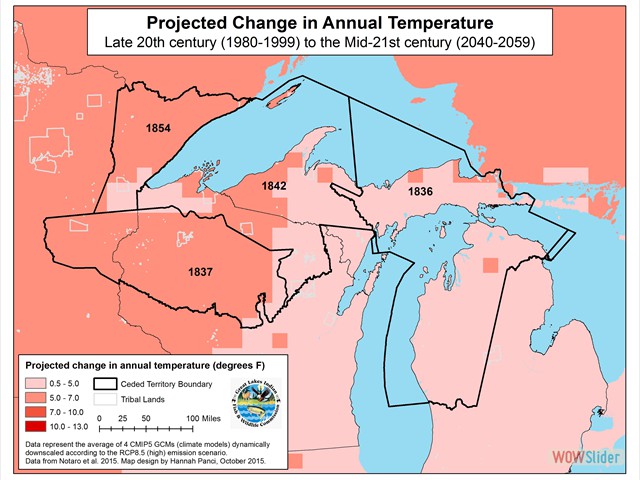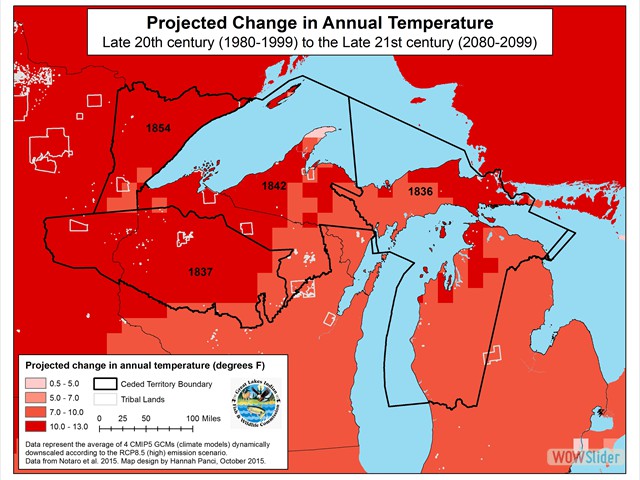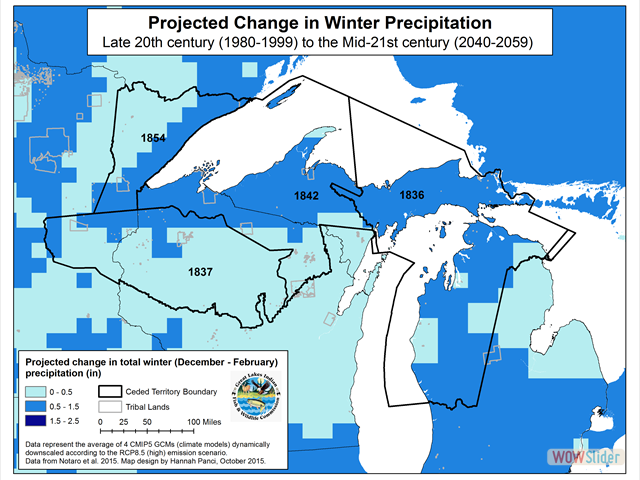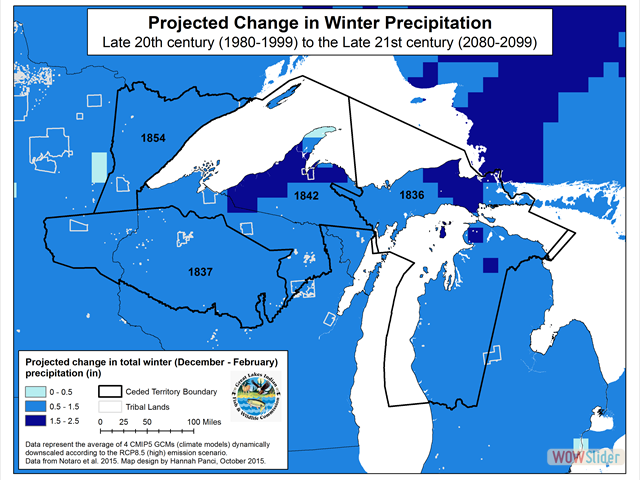Climate Changes in the Ceded Territories
Climate change effects will vary across the Ceded Territories. From recent (1980 -1999) averages, these maps show predicted increases in average annual temperature and winter precipitation by the mid- and late- 21st century. According to these models, average annual temperatures in the Ceded Territories will increase 3.5 to 6.7°F by the mid-21st century (the years 2040 - 2059) and 7.8 to 13.3°F by the late 21st century (the years 2080 – 2099). Winter precipitation will also increase.
These predictions are based on the best available data. However, each map shows an average of four different models, each reflecting a slightly different future and representing only one emissions scenario. Exactly what will happen in the future remains uncertain. These data are dynamically downscaled. Downscaling is a method of increasing the local accuracy of climate change projections beyond those provided by coarse global climate models. Dynamical downscaling uses a high-resolution regional climate model to increase the spatial resolution and incorporate the role of local topographic features. For example, dynamically downscaled data can incorporate things like lake effect snow and ice coverage on Lake Superior, which most other models cannot. In parts of the Ceded Territories, lake effect snow strongly influences the regional climate.
The data displayed in these maps represent the RCP 8.5 emissions scenario, a high emissions scenario. This scenario assumes our carbon emissions will continue to increase and we will continue without an explicit climate policy.
The climate data displayed in these maps comes from Dr. Michael Notaro, associate director of the Nelson Institute Center for Climatic Research at the University of Wisconsin-Madison and member of the Wisconsin Initiative on Climate Change Impacts (WICCI) group. WICCI is a collaboration of scientists and stakeholders formed as a partnership between the Nelson Institute for Environmental Studies at the University of Wisconsin-Madison and the Wisconsin Department of Natural Resources. The downscaling was funded by grants and contracts from the National Oceanic and Atmospheric Administration (NOAA) Climate Change Data and Detection, NOAA Great Lakes Environmental Research Laboratory (EPA grant), Michigan Department of Natural Resources (EPA grant), Northeast Climate Science Center, and the National Science Foundation.
GLIFWC will continue to use these data to explore potential impacts on treaty resources. For more information on these data and climate projections across the Midwest, visit http://ccr.aos.wisc.edu/resources/data_scripts/dyndown/. |





 1
1 2
2 3
3 4
4